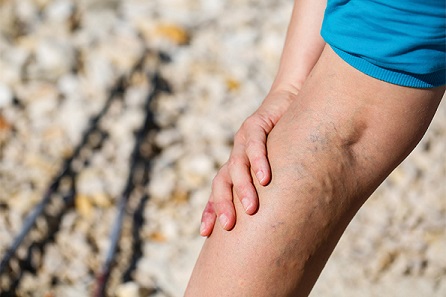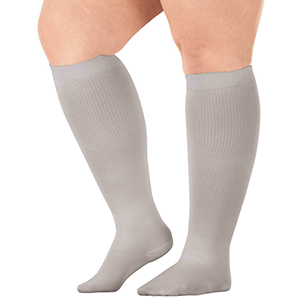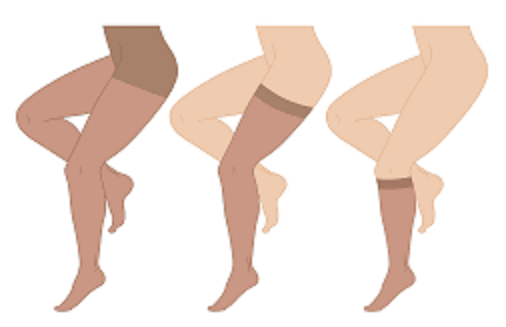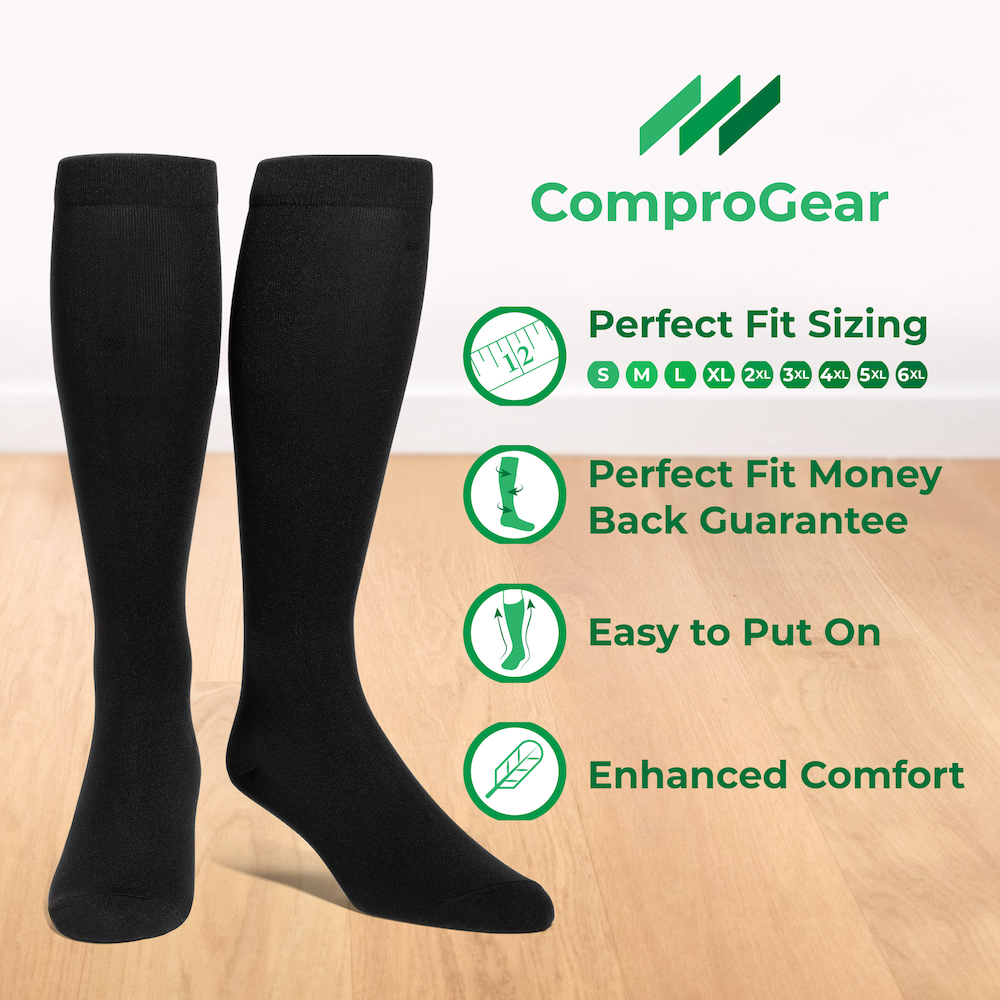Your nursing job comes with several occupational risks, including being prone to conditions like muscle pain, soreness, and swelling in the legs. You can prevent these conditions with an easy solution – by using compression socks.
While a good pair of shoes or footwear can help mitigate these occupational hazards, for decades, medical professionals – most especially nurses – have used compression socks for these common ailments, and selecting the best one for you is an important task.
Each of us is different, and we’re built differently, too. Here are some considerations on how to select the best plus size compression socks for nurses:
- Size, style, and length
- Compression levels
- Comfort and the use of quality fabrics
- Purpose for using

Are There Medical Benefits To Wearing Compression Socks?

Varicose veins and spider veins are prevalent among nurses and are now considered occupational diseases. They are caused by regular, prolonged sitting or standing, leading to blood valves getting damaged and causes blood to pool in the damaged veins and lose their ability to pump blood properly.
These unsightly diseases also cause pain, itchiness, heaviness, exhaustion, and many other side effects.
You can effectively treat and possibly help prevent them by using the correct compression socks, such as plus-size compression socks. They are also inexpensive and less intrusive than other treatment methods. In severe cases, and used along with the other treatment methods, they can ensure optimum healing.
Do Compression Socks Actually Work?
Compression socks boost the pumping movement of your calf muscles, which results in increased blood flow in the ankle region. Further up the leg, the pressure they create gradually decreases.
How Do Compression Socks Help?
Here are some of the benefits to wearing compression socks:
- Compression socks and stockings help reduce swelling
When you stand for long periods, this causes an excessive build-up of lactic acid in your muscles, and compression socks can help prevent this build-up.
- Compression socks and stockings improves blood circulation
Your heart exerts great effort to pump blood from the legs back to your heart. This is why varicose veins are commonly found on the legs. Compression socks help compress your leg veins and improve blood circulation by increasing the rate of blood flow throughout the lower half of your body.
- Compression socks and stockings promotes oxygen flow
Compression hosiery for nurses improves the blood flow from the feet to the heart and vice versa. This means that the oxygenated blood can reach your legs at a faster rate.
Plus Size Nurses Have Different Needs
Each human body is built uniquely. Nowadays, and luckily, compression socks do not come in a universal one-size-fits-all size. They are available in many shapes, styles, and sizes to meet the needs of each customer.
Accordingly, manufacturers of compression socks make sure to cater their products to each of your unique needs, including those of the plus-sized.
What To Watch Out For When Buying Compression Socks
Typically, your purchase decisions should be based on the following factors below:
- Size, style, and length
- Compression levels
- Comfort and the use of quality fabrics
- Purpose for using
How To Choose The Correct Size

Finding the correct plus-size compression sock size is crucial; it is should be neither too tight nor too loose. Compression socks are sized differently from regular socks, and they are not meant to fit evenly across the whole leg.
Important tip: Compression socks should fit tightly at the ankles and become looser towards the top, creating the squeezing effect necessary for good compression.
- Measure your legs accurately
Most people skip this most crucial step. Before getting a pair of compression socks, make sure to take accurate measurements of your calves and ankles. For full-length socks, you will need to take down the length and width measurements of your entire leg.
Important tip: For the plus-sized, you will need plus-size compression socks, and it becomes even more important to know exactly how big your legs are.
- Compare your measurements with the product chart
Don’t just randomly select from the available sizes of a product. Measure yourself properly and compare the measurements with the product’s sizing chart to ensure the best fit.
Important tip: Plus-size compression socks are usually made of more stretchy and flexible material (spandex, for example) than those for average sizes and help ensure that your legs always receive the best and most comfortable compression.
- Choose the right pair
If you are already a regular user of compression socks but have never noticed any positive changes, you might be simply wearing the wrong size. Keep in mind that loose-fitting compression socks will only give you the effect of normal socks.
Important tip: Getting a size lower usually works for most people. However, this is only advisable for the regular use of compression socks. For those with serious medical conditions, consult an expert.
How to Choose the Best Style
Forget the old and plain compression socks. Today, compression socks come in a variety of colors and styles. You can even match your compression socks with the color and patterns of your uniform. For variety, there is a multitude of fun patterns and styles available and you can even experiment with all the latest trends in the fashion industry.
How to Choose the Appropriate Length

Plus-size compression socks vary in length and can stop at the ankle, reach the knee or thigh as with knee-highs and thigh-highs, or cover your entire leg similar to a pantyhose. Your choice should depend on the area of your leg that needs the most compression.
How to Choose the Appropriate Compression Level (Or mmHg)
Compression level is measured on the scale of mmhg, with compression socks between 15-20 mmHg and 20-30 mmHg most commonly used by nurses. Instead of immediately using a pair with these compression levels, however, you can start by using a pair of lower-level compression socks, which will allow you to get used to them.
If necessary, you can gradually switch to higher levels of compression. For regular use, graduated compression socks that apply pressure in the ankle region work the best.
Other Important Things to Keep in Mind When Selecting Your Own Plus Size Compression Socks
- Optimum comfort
Make sure that the compression socks you choose are comfortable enough to wear all day. They should never come in the way of your work or cause any discomfort. They need to be durable, too.
- Waterproof and sweat resistant
Many compression socks nowadays come with moisture-wicking properties, which ensure your feet are always kept dry and inhibit fungal growth. Look for durable, high-quality socks that use modern, breathable fabrics.
- Odor resistant
The risk of body odor may be even higher with wearing compression socks due to their snug fit. Choose one that has odor-resisting properties.
How Long Can You Wear Them?
You can usually wear compression socks all day, throughout your workday, and even after work hours. Wearing them during your rest hours will help your leg muscles recover faster from fatigue and pain.
Whether sitting, standing, or lazing around in bed – compression socks can be usually be used constantly. You only need to take them off before sleeping. When used for healing or medical purposes, however, consult your doctor.
Conclusion
Plus-size compression socks function similarly to bandages wrapped around your legs, minus all the fuss and effort, and come with many health benefits. Pamper yourself with a pair of compression socks and enjoy these health benefits.
Don’t pick up the first pair of compression socks you find. (This is great advice for any hosiery, for that matter!) Nowadays, most manufacturers and their different brands adhere to modern fashion trends and use the latest available technology in their materials.
Whatever brand you choose, you’ll need to consider several things when purchasing the right pair. If you’re plus-sized, choosing the right plus-size compression socks that fit your lifestyle and needs becomes even more crucial. Failing to do so will make you lose out on the positive benefits that they can bring.
This page last updated December 15, 2022
